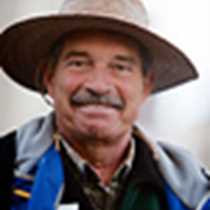Isla San Francisco, Baja California Sur
The islands in the Gulf of California are the “Galápagos” of Mexico. Very well conserved and in close proximity to the Peninsula of Baja California, each one of the islands is resplendent with endemic plants and animals. Isla San Francisco could not be any more similar. With a lovely sandy beach, all to ourselves!
But the early part of the morning was used to search for marine mammals in the waters near the island. And it paid off! Two beautiful, gigantic blue whales were in our ship’s view, which we had the opportunity to follow for a while. The largest of all living animals, let alone the largest ever of all whales, these animals were probably feeding off krill, a tiny, super abundant crustacean food, in such quantities that it can satisfy the primal hunger of these leviathans. Tons of krill are needed every day to fulfill the requirements of these animals.
After lunch we landed on Isla San Francisco, where we had many different activities: snorkeling, kayaking and hiking in the interesting desert. Few plants were flowering, but that didn’t keep us from finding different small animals under some rocks and among the xeric vegetation: lizards, scorpions, and a desert chuckwalla, which is essentially a fat, slow iguana. It did not mind being photographed for posterity, indeed it posed for us! On the opposite side of the island we also had the opportunity of looking into the tide pools, to enjoy all the marvelous invertebrate fauna of the cool waters of this island.
The islands in the Gulf of California are the “Galápagos” of Mexico. Very well conserved and in close proximity to the Peninsula of Baja California, each one of the islands is resplendent with endemic plants and animals. Isla San Francisco could not be any more similar. With a lovely sandy beach, all to ourselves!
But the early part of the morning was used to search for marine mammals in the waters near the island. And it paid off! Two beautiful, gigantic blue whales were in our ship’s view, which we had the opportunity to follow for a while. The largest of all living animals, let alone the largest ever of all whales, these animals were probably feeding off krill, a tiny, super abundant crustacean food, in such quantities that it can satisfy the primal hunger of these leviathans. Tons of krill are needed every day to fulfill the requirements of these animals.
After lunch we landed on Isla San Francisco, where we had many different activities: snorkeling, kayaking and hiking in the interesting desert. Few plants were flowering, but that didn’t keep us from finding different small animals under some rocks and among the xeric vegetation: lizards, scorpions, and a desert chuckwalla, which is essentially a fat, slow iguana. It did not mind being photographed for posterity, indeed it posed for us! On the opposite side of the island we also had the opportunity of looking into the tide pools, to enjoy all the marvelous invertebrate fauna of the cool waters of this island.




